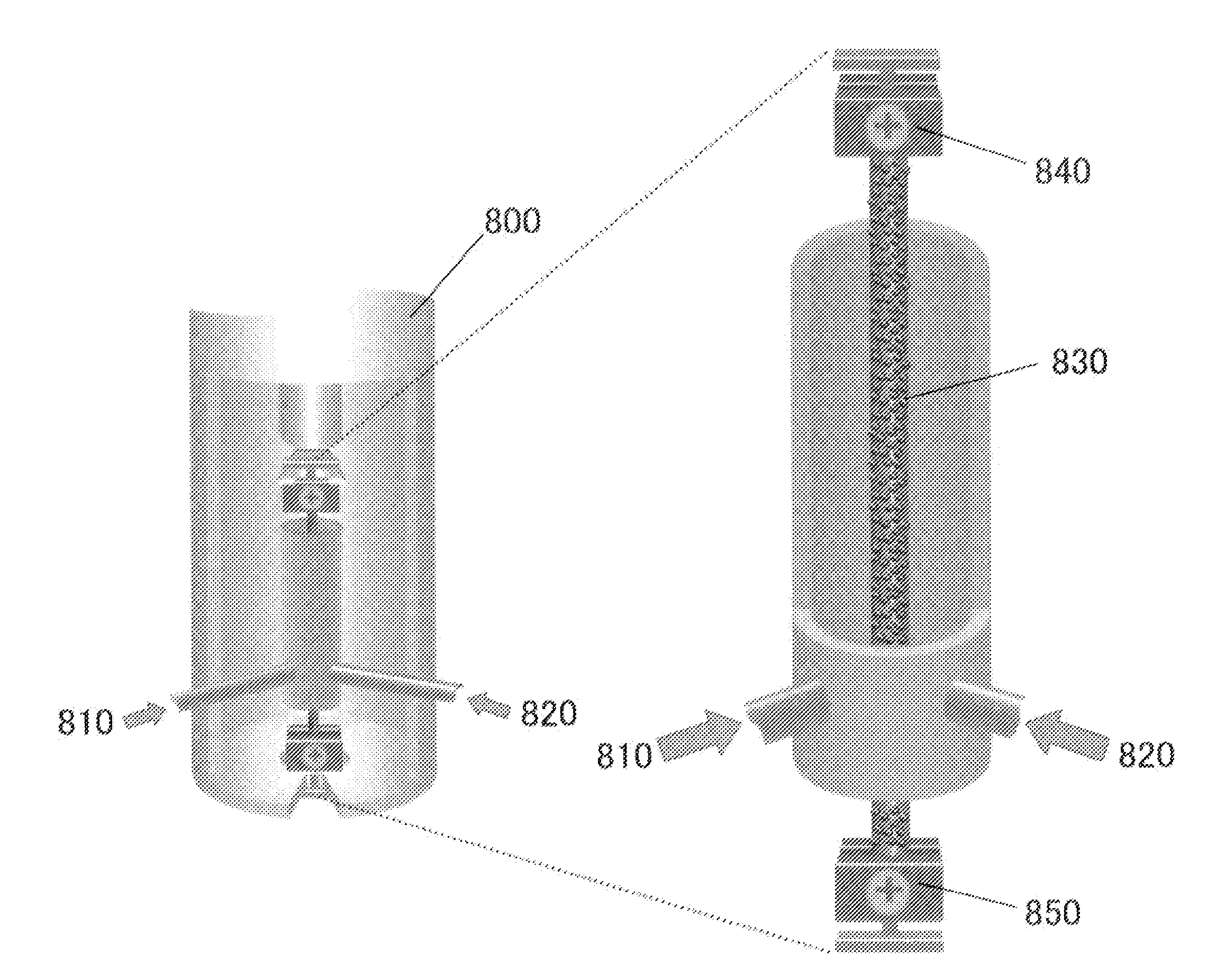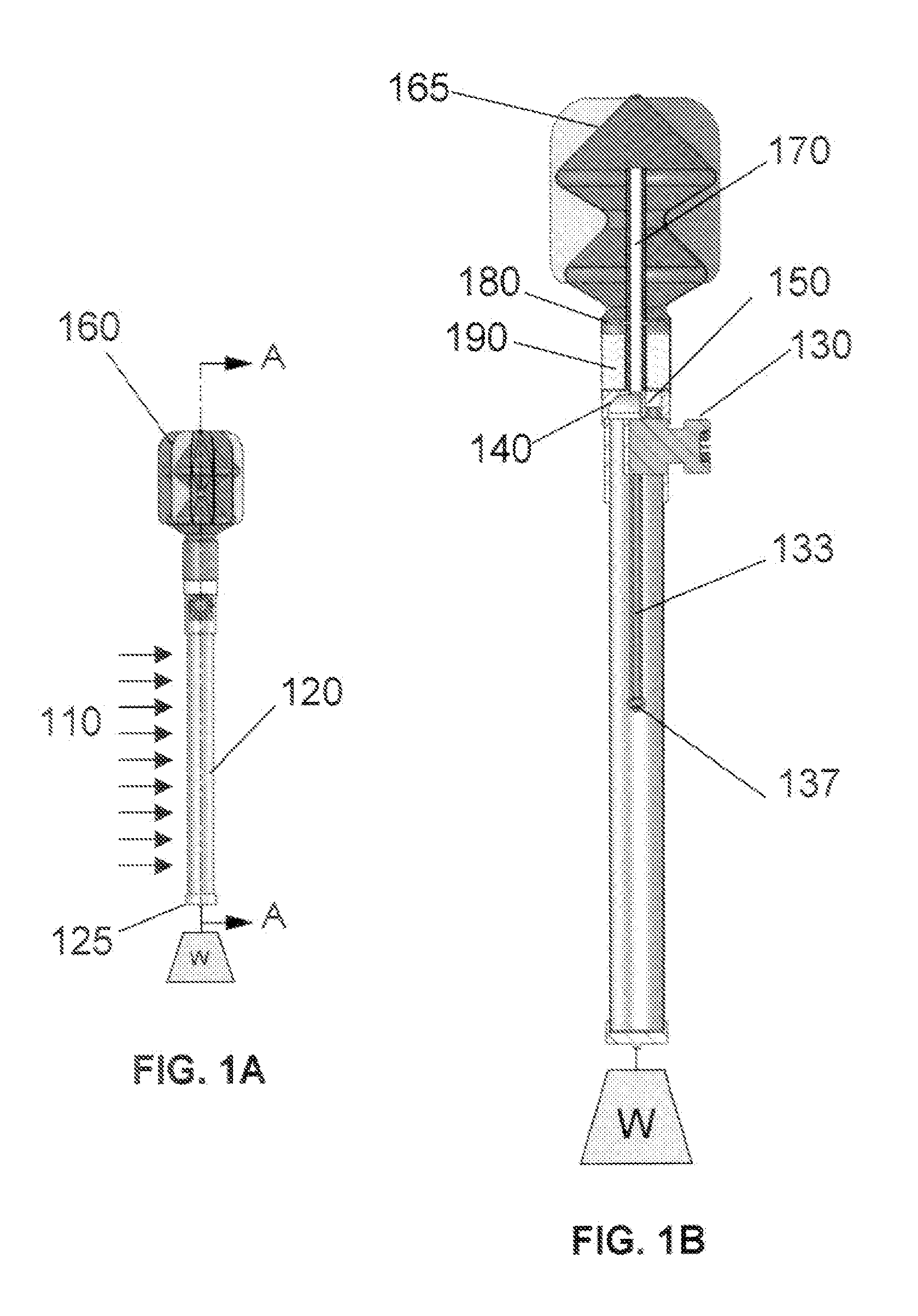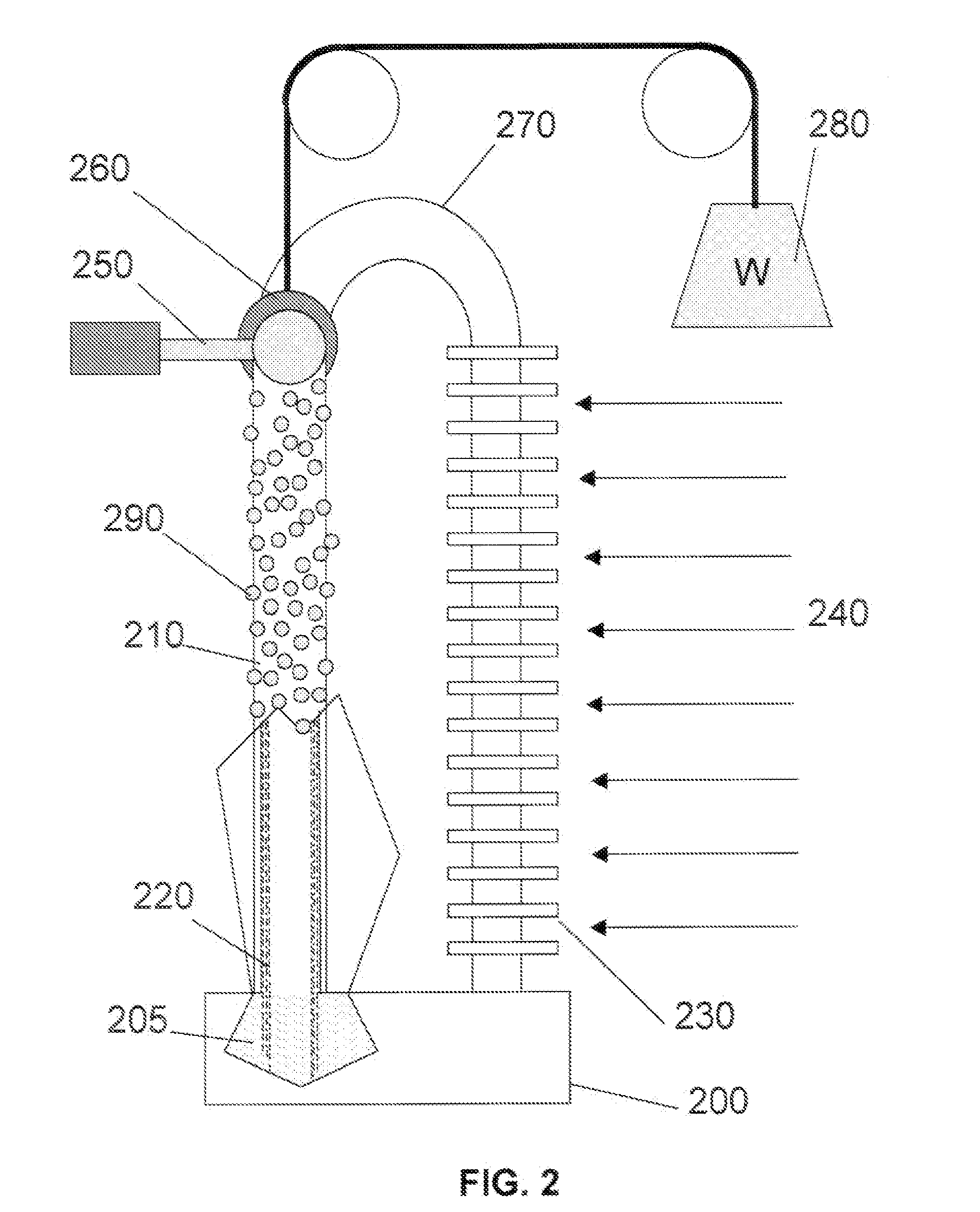Fuel-powered actuators and methods of using same
- Summary
- Abstract
- Description
- Claims
- Application Information
AI Technical Summary
Benefits of technology
Problems solved by technology
Method used
Image
Examples
example 1
[0234]Cantilever-based nanotube actuators were made by sequential vacuum filtration of (1) 100 ml of an aqueous solution including an ultrasonically dispersed mixture of 10 mg of SWNTs (HiPco nanotubes from Carbon Nanotechnologies Inc.) and 0.2 g of Triton X-100 surfactant (Aldrich) to make the first layer of the cantilever and (2) 6 ml of an aqueous solution containing an ultrasonically dispersed mixture of 60 mg Triton X-100 and 6 to 10 mg carbon-supported Pt catalyst, (80 wt. % of 1:1 by weight Pt on carbon from E-Tek mixed with 20 wt. % NAFION®-1100) to form the opposing layer of the cantilever. After air drying and peeling from the 45 mm diameter, 5.0 μm poly(tetrafluoroethane) filter, the bilayer sheet was cut with a razor blade to form 3.0 mm×30.0 mm×50 μm cantilever strips.
example 2
[0235]This example demonstrates the operation of a charge-storage fuel-powered actuator in which a cantilever electrode operates wholly as a result of dimensional changes occurring in a single compartment of a two-compartment fuel-powered electrochemical cell. In contrast to other cantilever design possibilities, this cantilever actuator comprises only one electrode. As shown in FIG. 3, the actuating element is a cantilever 320 (made as described in Example 1), which includes a nanotube sheet strip laminated with a mixture of Pt-coated carbon and NAFION® ionomer. This cantilever was immersed in 1 M H2SO4 electrolyte 360 and the counter electrode was a conventional fuel cell electrode 310 comprising a Pt—C-NAFION® ionomer layer deposited on a NAFION® 117 membrane, which separated the fuel (hydrogen, at the counter electrode, whose entrance site is 330) from the oxidant (oxygen, at the nanotube actuator electrode, which enters at 340 and where produced water and residual oxygen exits ...
example 3
[0240]Although the above fuel-cell muscle uses only one electrode for actuation in a two-compartment actuator cell (having both working and counter electrodes), both of these electrodes can simultaneously serve as muscles. To demonstrate this the oxygen and hydrogen delivery compartments in FIG. 3 were switched so that the actuator electrode became the hydrogen electrode. This caused a decrease in the time required for the charge-injection stroke to 1 to 2 s and a 180° phase shift in actuator response direction. This phase shift and unchanged actuation amplitude resulted from the low charge-storage capacity of the nanotube sheet as compared to that of the much larger counter electrode. As a result the nanotube electrode potential cycles between about 0 and about 0.9 V (versus NHE) during charge and discharge, and only the direction of this shift depends on the gas at the actuating electrode.
PUM
| Property | Measurement | Unit |
|---|---|---|
| Temperature | aaaaa | aaaaa |
| Temperature | aaaaa | aaaaa |
| Structure | aaaaa | aaaaa |
Abstract
Description
Claims
Application Information
 Login to View More
Login to View More - R&D
- Intellectual Property
- Life Sciences
- Materials
- Tech Scout
- Unparalleled Data Quality
- Higher Quality Content
- 60% Fewer Hallucinations
Browse by: Latest US Patents, China's latest patents, Technical Efficacy Thesaurus, Application Domain, Technology Topic, Popular Technical Reports.
© 2025 PatSnap. All rights reserved.Legal|Privacy policy|Modern Slavery Act Transparency Statement|Sitemap|About US| Contact US: help@patsnap.com



